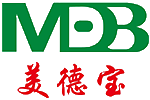-
-
Company Profile
-
Waterproof breathable membrane
Vapor barrier film
Barrier film
Reflective insulation film
The Evolution of Waterproofing: The Rise of Polyvinyl Chloride Membranes
Release time:
2025-10-31
The Evolution of Waterproofing: The Rise of Polyvinyl Chloride Membranes
Table of Contents
- 1. Introduction to Waterproofing Solutions
- 2. A Brief History of Waterproofing Materials
- 3. What are Polyvinyl Chloride (PVC) Membranes?
- 4. Advantages of PVC Membranes in Waterproofing
- 5. Installation Techniques for PVC Membranes
- 6. Applications of PVC Membranes
- 7. The Future of Waterproofing: Trends and Innovations
- 8. FAQs about PVC Membranes and Waterproofing
- 9. Conclusion
1. Introduction to Waterproofing Solutions
Waterproofing is a crucial component in modern construction and decoration, protecting structures from moisture and water damage. With the increasing awareness of environmental factors and the need for durable constructions, the evolution of waterproofing technologies has accelerated. Among the various materials available, Polyvinyl Chloride (PVC) membranes have emerged as a preferred choice due to their unique properties and benefits.
2. A Brief History of Waterproofing Materials
The journey of waterproofing materials began thousands of years ago. **Ancient Egyptians** used mud and straw to create barriers against water, while **Roman engineers** advanced the art by utilizing lead and asphalt. As technology progressed, various materials emerged:
2.1 Traditional Waterproofing Materials
- **Bituminous Membranes**: Widely used for their effectiveness in waterproofing, though they can be heavy and require meticulous installation.
- **Rubber Membranes**: Flexible and durable, but their application can be limited by temperature and exposure to UV light.
2.2 The Advent of Synthetic Materials
The late 20th century marked an important transition with the introduction of synthetic materials. These materials, including PVC, offered improved performance, longevity, and ease of use.
3. What are Polyvinyl Chloride (PVC) Membranes?
Polyvinyl Chloride (PVC) membranes are synthetic sheets constructed from a polymer that is both versatile and durable. These membranes are manufactured through a process that combines PVC resin with various additives to enhance performance characteristics.
3.1 Composition and Properties of PVC
PVC membranes typically consist of:
- **Polymer Base**: Provides strength and flexibility.
- **Plasticizers**: Enhance elasticity and workability.
- **Stabilizers**: Protect against UV degradation and environmental factors.
**Key Properties**:
- **Water Resistance**: Excellent barrier against moisture.
- **Versatility**: Can be used in various applications, from roofs to foundations.
- **Lightweight**: Easier to handle and install than traditional materials.
4. Advantages of PVC Membranes in Waterproofing
The rise of PVC membranes in waterproofing applications is a testament to their numerous advantages.
4.1 Durability and Longevity
PVC membranes are known for their long lifespan, often exceeding 20 years when properly installed. They resist rot, mildew, and UV exposure, ensuring that they maintain their integrity over time.
4.2 Cost-Effectiveness
While initial costs may be higher than some traditional methods, the long-term savings from reduced maintenance and replacement make PVC membranes a **cost-effective** choice.
4.3 Flexibility and Ease of Installation
The flexibility of PVC membranes allows them to conform to various shapes and surfaces, making installation simpler and faster than some rigid materials.
4.4 Environmental Resistance
PVC membranes are resistant to chemicals, oils, and several environmental factors, making them suitable for a diverse range of applications.
5. Installation Techniques for PVC Membranes
The effectiveness of PVC membranes largely depends on proper installation. Below are common techniques used in the application of PVC membranes:
5.1 Mechanically Attached Systems
In this method, the membrane is secured to the substrate using mechanical fasteners. This approach is often utilized in roofing applications.
5.2 Fully Adhered Systems
PVC membranes can be fully adhered to the substrate using adhesives, providing a seamless and watertight solution ideal for vertical surfaces.
5.3 Loose-Laid Systems
In situations where wind uplift is a concern, loose-laid systems allow for the membrane to be secured with ballast, avoiding penetrations that could lead to leaks.
6. Applications of PVC Membranes
PVC membranes are incredibly versatile and find their use in numerous applications across various industries.
6.1 Roofing Solutions
One of the most common uses of PVC membranes is in roofing systems. Their durability and waterproof properties make them ideal for flat and low-slope roofs.
6.2 Foundation Waterproofing
PVC membranes are used in below-grade applications to protect foundations from water intrusion, ensuring structural integrity.
6.3 Landscaping and Garden Applications
In landscaping, PVC membranes serve as effective barriers against water, controlling erosion and providing waterproofing for ponds and fountains.
6.4 Industrial Applications
Industries such as chemical manufacturing utilize PVC membranes due to their resistance to chemicals and the need for waterproofing in various processes.
7. The Future of Waterproofing: Trends and Innovations
The waterproofing industry continues to evolve, with innovations paving the way for improved materials and techniques.
7.1 Sustainable Practices
As environmental concerns grow, the industry is moving towards more sustainable materials and methods. Innovations in PVC recycling are becoming more prevalent, allowing for eco-friendly applications.
7.2 Smart Waterproofing Solutions
The integration of technology, such as moisture sensors and smart monitoring systems, is positioning waterproofing solutions to be more responsive to environmental conditions.
7.3 Enhanced Durability and Performance
Research and development are focused on enhancing the properties of PVC membranes, resulting in longer-lasting materials with improved resistance to environmental factors.
8. FAQs about PVC Membranes and Waterproofing
8.1 What is the life expectancy of PVC membranes?
**PVC membranes** typically have a life expectancy of over 20 years with proper installation and maintenance.
8.2 Are PVC membranes environmentally friendly?
While PVC is a synthetic material, advancements in recycling processes are making it more sustainable for use in construction.
8.3 Can PVC membranes be installed in cold weather?
Yes, but it’s essential to follow specific installation guidelines to ensure proper adhesion and performance in colder temperatures.
8.4 Do PVC membranes require maintenance?
Generally, PVC membranes require minimal maintenance, but periodic inspections can help identify any potential issues early.
8.5 Are there any limitations to using PVC membranes?
While PVC membranes are versatile, they may not be suitable for applications with extreme heat or where certain chemicals can degrade the material.
9. Conclusion
The evolution of waterproofing technologies has significantly improved with the introduction of Polyvinyl Chloride (PVC) membranes. Their durability, versatility, and cost-effectiveness make them a favored choice in various applications, from roofing to industrial uses. As the industry continues to innovate, the future looks bright for PVC as it adapts to meet environmental demands and technological advancements. Embracing PVC membranes not only ensures effective waterproofing solutions but also paves the way for sustainable practices in the construction and decoration sector.Previous article
recommend News
Sell one
Kelly Ho
15133606577
kelly.ho@tjmeidebao.com
Sales two
All- All
- Product Management
- News
- Introduction
- Enterprise outlets
- FAQ
- Enterprise Video
- Enterprise Atlas
Sweep the attention to us

COOKIES
Our website uses cookies and similar technologies to personalize the advertising shown to you and to help you get the best experience on our website. For more information, see our Privacy & Cookie Policy
COOKIES
Our website uses cookies and similar technologies to personalize the advertising shown to you and to help you get the best experience on our website. For more information, see our Privacy & Cookie Policy
These cookies are necessary for basic functions such as payment. Standard cookies cannot be turned off and do not store any of your information.
These cookies collect information, such as how many people are using our site or which pages are popular, to help us improve the customer experience. Turning these cookies off will mean we can't collect information to improve your experience.
These cookies enable the website to provide enhanced functionality and personalization. They may be set by us or by third-party providers whose services we have added to our pages. If you do not allow these cookies, some or all of these services may not function properly.
These cookies help us understand what you are interested in so that we can show you relevant advertising on other websites. Turning these cookies off will mean we are unable to show you any personalized advertising.
Copyright: Tianjin Medabao Technology Co., Ltd.
Business License
-


